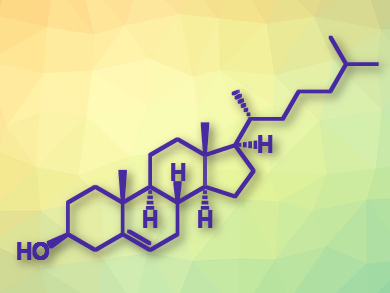John Warcup Cornforth was born on September 7, 1917, in Sydney, Australia. Starting at the age of 10, he experienced progressive hearing loss, which left him deaf by the age of 20. Despite being unable to hear the lectures, he successfully studied organic chemistry at the University of Sydney, where he received his Bachelor’s degree in 1937. During this time, he acquired his lifelong nickname “Kappa”. It stemmed from the Greek letter his initials resembled, which he used to mark his glassware in the laboratory.
Starting in 1939, he worked at the University of Oxford, UK, with Sir Robert Robinson, who would go on to receive the Nobel Prize in Chemistry in 1947. Cornforth finished his doctorate there in 1941 and that same year, he married Rita Harradence, a fellow Australian chemist working in Oxford. He collaborated with his wife throughout his career.
During World War II, he worked on the chemistry of penicillin, and in 1946, he joined the National Institute for Medical Research outside London, UK. Here, he worked on the synthesis of sterols and cholesterol. In 1951, simultaneously with Robert B. Woodward, he completed the first total synthesis of a non-aromatic steroid. Together with George Popják, Cornforth worked on the elucidation of the biosynthetic pathway towards cholesterol and similar compounds. Using deuterium and tritium labeling, they figured out the arrangement of acetic acid molecules from which the molecule is built and the stereochemistry of the enzyme-catalyzed reaction.
From 1965 to 1971, Cornforth was Professor at the University of Warwick, UK. In 1975, he joined the University of Sussex, Brighton, UK, where he remained until his retirement. He continued his research until nearly the age of 90. Among many other honors, Cornforth won the Nobel Prize in Chemistry in 1975 “for his work on the stereochemistry of enzyme-catalyzed reactions”, shared equally with Vladimir Prelog “for his research into the stereochemistry of organic molecules and reactions”. John Cornforth was knighted in 1977. He died on December 8, 2013.
Sir John Cornforth is the answer to Guess the Chemist (69).
Sources
- John Cornforth (1917–2013),
Jim Hanson,
Nature 2014, 506, 35.
https://doi.org/10.1038/506035a - Sir John Cornforth Obituary,
Douglas Young,
The Guardian, January 12, 2014. - John Cornforth – Biographical,
Wilhelm Odelberg (Ed.),
in Les Prix Nobel en 1975, Nobel Foundation, Stockholm, 1976.
Selected Publications
- Sterol Biosynthesis: The Early Days,
J. W. Cornforth,
Biochem. Biophys. Res. Commun. 2002, 292, 1129–1138.
DOI: 10.1006/bbrc.2001.2006 - Studies on the Biosynthesis of Cholesterol. XIX. Steric Course of Hydrogen Eliminations and of C-C bond Formations in Squalene Biosynthesis,
J. W. Cornforth, R. H. Cornforth, C. Donninger, G. Popjak,
Proc. R. Soc. B 1966, 163, 492–514.
DOI: 10.1098/rspb.1966.0004 - Substrate stereochemistry in squalene biosynthesis,
G. Popják, J. W. Cornforth,
Biochem J. 1966, 101, 553–568. - Preparation of R- and S-mevalonolactones,
R. H. Cornforth, J. W. Cornforth, G. Popják,
Tetrahedron 1962, 18, 1351-1354.
DOI: 10.1016/S0040-4020(01)99289-0 - Studies on the Biosynthesis of Cholesterol. XVI. Chemical Synthesis of 1-H23-2-C14– and 1-D2-2-C14–trans–trans-Farnesyl Pyrophosphate and Their Utilization in Squalene Biosynthesis,
G. Popják, J. W. Cornforth, R. H. Cornforth, R. Ryhage, D. S. Goodman,
J. Biol. Chem. 1962, 237, 56–61. - A general stereoselective synthesis of olefins,
J. W. Cornforth, R. H. Cornforth, K. K. Mathew,
J. Chem. Soc. 1959.
DOI: 10.1039/jr9590000112



